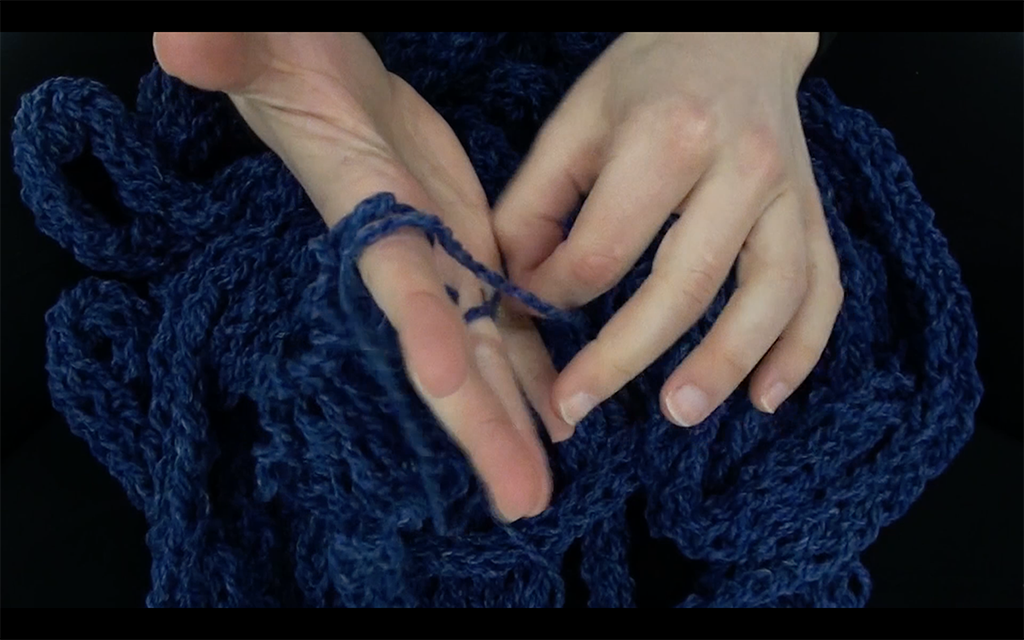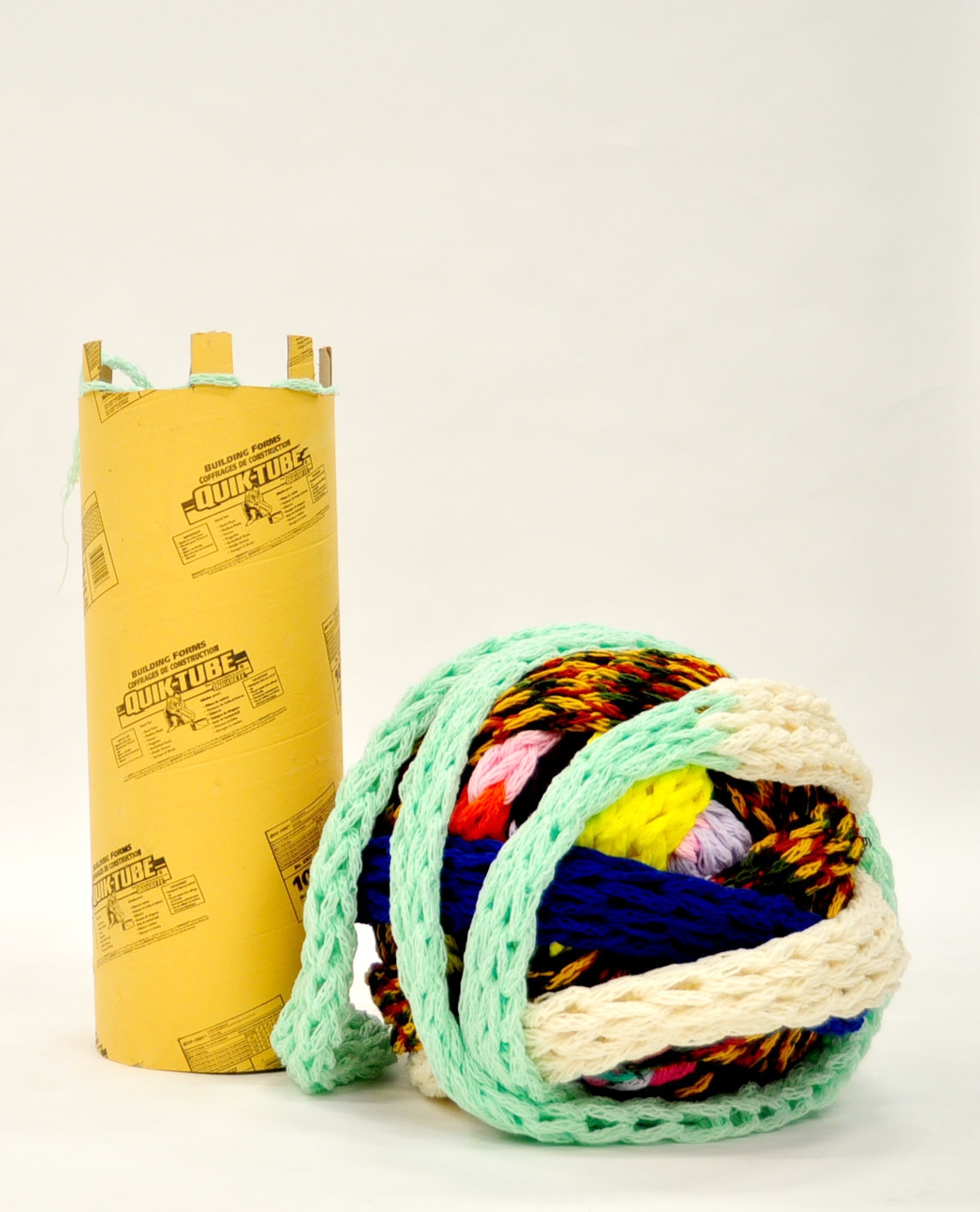“the only way by which one [can] be sure that a machine thinks is to be the machine and to feel oneself thinking.”
–Alan Turing
The Machine: Knitting Ouroboros. Knitting is done by following a pre-established pattern, similar to how a computer program must also operate by executing a set of instructions. This project began when I was in Elementary School and my Grade 7 teacher showed us how to do “finger knitting”. I embraced this newly learned skill and instantly became obsessed. I asked my mom to give me any extra skeins of yarn for which she no longer had a use. I continued to finger knit and produced a long continuous strand, because I wanted to see how long it would get. When I was not working on it, I rolled it up into a big ball and stored it in my closet. When friends came over I was both embarrassed to let them see the big ball of yarn in my closet and also proud of my accomplishment. I was satisfied that there was evidence of the many hours of labor I contributed to my obsession. At this point I was already embracing mechanical processes; I reveled in the sense of control I felt while I was knitting.
Many years later, I have held on to the knitted ball of yarn and it has grown just as I have. As with many of my projects it will never be complete. Similar to a rhizome The Machine: Knitting Ouroboros does not have a clear beginning, middle, or end; it is in an infinite state of change and transformation.[1] The subtitle Knitting Ouroboros is a symbolic and mythological reference to infinite growth. Ouroboros “was a mythical serpent that swallowed its own tail, an embodied contradiction that must, according to logic, either grow ever larger on its miraculous diet or, just as miraculously, consume itself and cease to exist.”[2] Just like the mythical serpent, my knitted yarn is continuously growing and feeding off of itself.
The Machine: Knitting Ouroboros (In Progress), Yarn, cardboard, 2017
The Machine: Knitting Ouroboros (In Progress), Yarn, 2017
The Machine: Knitting Ouroboros is made up of several different components. The first begins with skeins of yarn, which are finger knitted. The finger knitted yarn then informs the next part of the process where it becomes the base strand that is re-knitted through a large-scale French knitting loom. The re-knitted yarn goes through the French knitting loom and transforms into a larger, more complex snake-like string. This large string is displayed in an ever-growing continuous coil on the floor. The presentation is meant to emphasize the cyclical nature of the ouroboros serpent. The project demonstrates a connection between the ouroboros, the knitted yarn, and machines, which all continue to grow and feed off of themselves.
The Machine: Knitting Ouroboros, Yarn, 2017
The project also involves a video displayed on a TV, which shows the artist working as a machine performing the repetitive task of knitting. One part of the video shows a close-up shot of hands finger knitting. Even though it is evident that the hands are made of flesh, they appear robotic. To me the hands seem to take on mechanical qualities, which are stiff, aggressive, and even violent. Another section of the video documents the elegant rhythmic movements of the hands when using the French knitting loom. The visible contrast between flow and choppiness is in a constant loop and for me it becomes a captivating viewing experience. A conflicting statement emerges between the beauty that human hands are capable of creating and the potential for destructive chaos made possible by mechanical production.
The Machine: Knitting Ouroboros, Yarn, Wood, 2017
The audio includes the following phrases: “I am a machine”, “When I knit I feel like a machine”, “I must do the same action, over and over and over again”, “There is no end goal, there is no beginning and there is no end”, “Are you afraid of machines?”, “Why are you afraid of machines?”, “Are you afraid of me?”, “Are you afraid of becoming a machine?”. The phrases were compiled based off of thoughts I repeatedly have when I am knitting. Each of the phrases was recorded using my own voice, as well as several computer voices using an online voice generator. The audio was edited using a structured process of simple pattern formations in order to emphasize its mechanical qualities. The objective is for the audio to create discomfort and opportunities for reflection of human thoughts and fears toward machines.
[1]Deleuze, Gilles, and Félix Guattari. "Introduction: Rhizome." A Thousand Plateaus: Capitalism and Schizophrenia. Minneapolis: University of Minnesota, 1987, 3-25.
[2] Dyson, George B. Darwin Among the Machines: The Evolution of Global Intelligence. Basic Books, 2012, 227.
Art on Demand 4.4, The Reach Gallery & Museum, Abbotsford, BC, 2018-19

